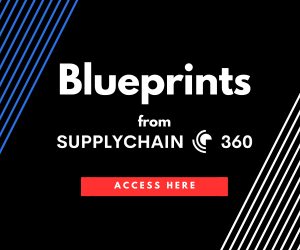
supply chain collaboration and integration
Integration Technologies & Platforms
BLUEPRINTS
Seamless connectivity within supply chains is not just an advantage; it’s a necessity. The complexity and scope of modern multinational supply chains present significant challenges, making efficient integration vital for success.
This blueprint is essential as it offers a strategic approach to achieving API-led connectivity, breaking down silos and enhancing real-time data exchange. By focusing on practical implementation steps, best practices, and addressing potential challenges head-on, it provides a comprehensive roadmap for supply chain directors.
Adopting this blueprint means embracing a future where decision-making is informed, operations are agile, and the supply chain is more resilient and responsive to market demands.
This detailed, step-by-step guide provides a structured approach to implementing API-led integration within supply chain management, encompassing assessment, strategy development, technical implementation, integration, and ongoing optimization. Following this guide will enable supply chain directors at multinational companies to effectively harness the power of API-led connectivity, enhancing efficiency, visibility, and collaboration across the supply chain ecosystem.
Assessment and Planning
Evaluate Current Systems
- Catalog all software, databases, and platforms currently in use.
- Identify data silos and any existing integration solutions.
Define Objectives
- Increase real-time data visibility across the supply chain.
- Enhance partner and vendor integration.
- Improve operational efficiency and response times.
Stakeholder Engagement
- Conduct workshops and interviews to gather requirements and expectations.
- Establish a cross-functional steering committee for the project.
Feasibility Study
- Perform a cost-benefit analysis.
- Consider the scalability and adaptability of proposed solutions.
API Strategy Development
Design Principles
- Emphasize RESTful principles for simplicity and scalability.
- Adopt an API-first design approach.
API Modeling
- Define resources, methods, and schemas in a machine-readable format.
- Ensure APIs are self-describing and discoverable.
Governance and Lifecycle Management
- Establish an API governance framework.
- Define policies for version control, deprecation, and retirement.
Security and Compliance
- Implement OAuth, JWT, or other secure authentication methods.
- Ensure data privacy and compliance standards are met (e.g., GDPR, CCPA).
Implementation Framework
Selecting Tools and Platforms
- Evaluate and select API management platforms based on scalability, ease of use, and integration capabilities.
- Choose development environments and tools that support the chosen API modeling frameworks.
Development Environment Setup
- Ensure environments are isolated to prevent disruptions and security breaches.
- Implement CI/CD pipelines for efficient development and deployment.
API Development and Deployment
- Use agile development methodologies for iterative development and feedback.
- Deploy APIs in a controlled environment, ensuring rollback capabilities.
Integration and Testing
System Integration
- Use the ESB (Enterprise Service Bus) model for integrating disparate systems if necessary.
- Establish secure connections with partners’ systems.
Testing Protocols
- Use automated testing tools to ensure consistency and efficiency.
- Conduct end-to-end testing to validate complete workflows.
User Acceptance Testing (UAT)
- Collect feedback and iterate on the solution as needed.
- Prepare documentation and training materials for end-users.
Monitoring and Optimization
Performance Monitoring
- Use API management platforms’ built-in analytics or third-party monitoring tools.
- Set up alerts for anomalies or performance issues.
Usage Analytics
- Identify popular APIs and potential areas for optimization.
- Monitor for unexpected usage patterns that may indicate security issues.
Continuous Improvement
- Use DevOps practices for continuous deployment and improvement.
- Engage with the user community for feedback and feature requests.
Implementing these steps methodically will ensure a robust API-led integration framework that aligns with business goals, enhances supply chain operations, and fosters greater collaboration and efficiency across global networks.
In implementing API-led integration within supply chain operations, adhering to best practices is crucial for achieving efficiency, agility, and resilience. Here are key guidelines to ensure a successful integration:
- Embrace a Strategic Vision: Begin with a clear strategic vision that aligns API-led integration initiatives with overall business objectives. This ensures that all efforts contribute to the broader goals of enhancing supply chain visibility, efficiency, and collaboration.
- Prioritize Security and Compliance: Given the sensitive nature of supply chain data, prioritize security from the outset. Implement robust authentication, encryption, and access control measures. Compliance with international standards and regulations should also be integral to your API strategy to avoid legal and operational risks.
- Foster a Culture of Collaboration: Encourage a culture of collaboration between IT and supply chain management teams. Open communication channels and regular cross-functional meetings can help align technological capabilities with operational needs, ensuring that API solutions are both technically sound and practically relevant.
- Adopt an Agile and Iterative Approach: Supply chains are dynamic, so your API-led integration should be flexible. Adopt an agile methodology, allowing for iterative development, continuous feedback, and adaptability to change. This approach helps in rapidly addressing new challenges and opportunities as they arise.
- Focus on Scalability and Performance: As supply chains expand and evolve, the APIs must scale accordingly without compromising performance. Design APIs with scalability in mind, considering future growth, and regularly monitor and optimize API performance to handle increased loads efficiently.
- Invest in Training and Development: Ensure that both IT and supply chain teams are well-versed in the latest API technologies and integration strategies. Regular training sessions and workshops can enhance their skills and knowledge, leading to more innovative and effective integration solutions.
- Measure and Optimize Continuously: Establish key performance indicators (KPIs) to measure the impact of API-led integrations on supply chain operations. Use these metrics to continually assess and optimize API performance, functionality, and alignment with business goals.
By adhering to these best practices, companies can maximize the benefits of API-led integration, driving significant improvements in supply chain operations and achieving a competitive edge in the global market.
For an API-led integration, especially within complex supply chain operations, selecting the right set of tools and technologies is paramount. These tools not only facilitate the development and management of APIs but also ensure their scalability, security, and effectiveness in integrating diverse systems and data sources. Here’s an overview of essential tools and technologies that are integral to successful API-led integration:
- API Management Platforms: Platforms like Apigee, MuleSoft Anypoint, and AWS API Gateway offer comprehensive solutions for designing, deploying, managing, and securing APIs. Features include API gateways for traffic management, built-in security protocols, analytics for monitoring API usage, and developer portals to facilitate collaboration. These platforms enable seamless integration between internal and external systems, enhancing the agility and responsiveness of supply chain operations.
- Integration Frameworks and Middleware: Tools such as Apache Camel, Dell Boomi, and IBM App Connect provide powerful integration capabilities, enabling the connection of disparate systems and applications within the supply chain ecosystem. They support a wide range of data formats and communication protocols, ensuring smooth data flow and real-time information exchange across the supply chain.
- Containerization and Microservices: Technologies like Docker and Kubernetes support the development and deployment of APIs in microservices architecture. This approach enhances scalability and agility, allowing for the independent deployment and scaling of API services. It aligns with the agile and iterative approach outlined in the implementation steps, facilitating rapid development and deployment cycles.
- Security Tools: Implementing robust security measures is critical in safeguarding sensitive supply chain data. Tools and protocols such as OAuth 2.0, JWT (JSON Web Tokens), and TLS (Transport Layer Security) provide strong authentication, authorization, and encryption, ensuring secure data exchange across APIs.
- Development and Testing Tools: To support the agile development of APIs, tools like Postman for API testing and Swagger for API documentation are invaluable. They enable developers to design, test, and document APIs efficiently, ensuring high-quality and reliable API services.
Integrating these tools and technologies within the API-led integration process enhances the capability to build a robust, secure, and scalable API ecosystem. This ecosystem serves as the backbone for seamless and efficient connectivity across all facets of supply chain operations, driving operational excellence and strategic advantage.
To gauge the effectiveness of API-led integration in supply chain operations, supply chain directors should focus on a set of key performance indicators (KPIs) and metrics that reflect operational efficiency, agility, and collaboration. Here are essential metrics to track:
- API Performance Metrics: Track response times, throughput (requests per second), and error rates of APIs. Low response times and high throughput indicate efficient API performance, while low error rates signify reliability.
- Integration Coverage: Measure the percentage of supply chain operations and processes integrated through APIs. High integration coverage signifies a well-connected and cohesive supply chain ecosystem.
- Data Quality and Accuracy: Monitor the accuracy and consistency of data exchanged through APIs. High-quality data is crucial for making informed supply chain decisions and forecasts.
- Partner and Vendor Integration Levels: Assess the ease and depth of integration with partners and vendors. Effective API integration facilitates seamless collaboration, data exchange, and operational synchronization with external parties.
- Operational Efficiency Improvements: Evaluate the impact of API-led integration on reducing manual processes, speeding up transaction times, and decreasing operational costs. Improvements in these areas indicate enhanced operational efficiency.
- Supply Chain Visibility: Determine the extent to which supply chain directors have real-time visibility into operations, inventory levels, and partner activities. Increased visibility aids in proactive decision-making and risk management.
- Agility and Responsiveness: Measure the speed at which the supply chain can adapt to market changes, demand fluctuations, and supply disruptions. Enhanced agility and responsiveness are key benefits of effective API-led integration.
To interpret these metrics effectively, supply chain directors should use dashboard tools and analytics features provided by API management platforms. Regularly reviewing these metrics allows for continuous optimization of the API ecosystem, ensuring that the supply chain remains dynamic, efficient, and competitive in the global market.
Implementing an API-led integration strategy in supply chain operations can encounter several challenges. Understanding these obstacles and preparing with practical solutions is crucial for a smooth transition and successful integration. Here are common challenges and their solutions:
- Legacy Systems Integration: Many supply chains operate on legacy systems that may not readily support modern API integration, posing significant challenges.
Solution: Employ middleware solutions or integration platforms that act as a bridge between legacy systems and new APIs. This approach enables a phased integration, allowing legacy systems to communicate with newer applications through APIs.
- Data Security and Privacy Concerns: The open nature of APIs can raise security vulnerabilities, especially when dealing with sensitive supply chain data.
Solution: Implement robust security protocols such as OAuth 2.0 for authentication, encryption for data in transit and at rest, and API gateways to manage and monitor access. Regular security audits and compliance checks can also mitigate risks.
- Change Management: Resistance to change is a common human factor that can impede the adoption of new technologies.
Solution: Foster a culture of digital transformation through continuous education, training programs, and involving all stakeholders in the planning process. Demonstrating the tangible benefits of API-led integration can also help in gaining buy-in.
- Scalability and Performance Issues: As supply chains grow, APIs must scale accordingly without compromising performance.
Solution: Design APIs with scalability in mind, using microservices architecture to allow individual components to scale independently. Employ load balancers and monitor API performance continuously to identify and address bottlenecks.
- Compliance and Regulatory Challenges: Supply chains often span multiple jurisdictions, each with its own regulatory requirements.
Solution: Ensure that API solutions are compliant with all relevant regulations, such as GDPR for data protection. Engage legal and compliance experts to regularly update and audit API strategies.
- Complexity in Partner and Vendor Integration: Integrating APIs with multiple partners and vendors can become complex due to differing standards and technologies.
Solution: Adopt widely recognized standards and protocols for APIs to ensure compatibility. Leverage API management platforms that offer features like API translation and transformation to ease integration with diverse systems.
- Skill Gaps and Technical Expertise: The lack of skilled personnel familiar with API development and integration strategies can hinder progress.
Solution: Invest in training and development programs to upskill existing staff. Consider partnering with external experts or vendors to bridge temporary skill gaps.
By anticipating these challenges and implementing the outlined solutions, supply chain directors can navigate the complexities of API-led integration, ensuring a robust, secure, and efficient supply chain ecosystem.
By implementing this blueprint, you’ll transform your supply chain into a highly integrated, agile network. Embrace this roadmap to unlock unparalleled efficiency, visibility, and adaptability, positioning your operations at the forefront of the global market.
Unlock the full potential of your supply chain with SupplyChain360. Subscribe now for exclusive access to comprehensive blueprints, expert insights, and the resources you need to excel.








